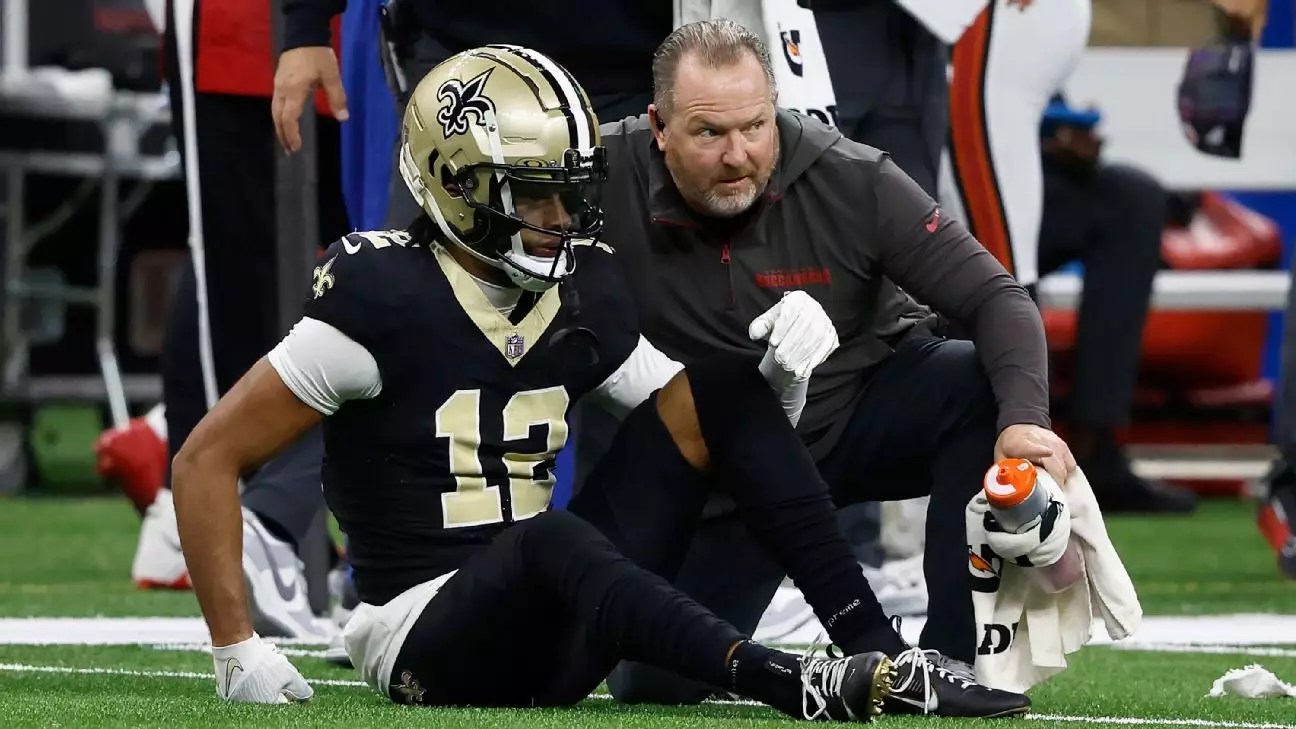In recent years, the National Football League (NFL) has faced increasing scrutiny over the safety practices surrounding player concussions. These head injuries are not only detrimental to the athletes but also pose long-term health risks, leading to calls for improved protective measures. Amidst these discussions, New Orleans Saints wide receiver Chris Olave’s decision-making regarding protective headgear highlights the ongoing evolution in player safety protocols. Following a series of concussions throughout his early career, Olave is contemplating the use of a Guardian Cap in his upcoming game, reflecting an adaptive response to a tragic yet prevalent issue in football.
Understanding the Guardian Cap’s Role
The Guardian Cap is a padded helmet cover designed to mitigate the intensity of impacts sustained during games. According to NFL Commissioner Roger Goodell, the implementation of these caps has contributed to a significant 52% reduction in concussion incidents across the league. What makes the Guardian Cap especially compelling is its dual-purpose: it not only adds a layer of protection for the players but also fosters an environment that prioritizes health without compromising the game’s integrity. Although primarily mandatory during practice sessions, some players like Olave see potential in wearing them during games, demonstrating a nuanced conversation around helmet safety and the perception of toughness in professional football.
Olave’s injury history serves as a critical backdrop for his contemplation of the Guardian Cap. Having missed two games within the two seasons of his NFL career due to concussions, the wide receiver experiences the lingering effects of such injuries more than most. His most recent concussion occurred during a clash with the Tampa Bay Buccaneers, wherein he absorbed a striking hit after making a catch. Following that incident, Olave was ruled out of a Thursday night match against the Denver Broncos—a quick turnaround that heightened concerns for his health and longevity in the sport.
Despite being assessed for head injuries, Olave’s experience illustrates the complexity of decision-making resulting from injury protocols. After enduring a previous concussion, he still returned to action against the Los Angeles Chargers, emphasizing the intricate balance between the player’s eagerness to contribute and the medical assessments aimed at ensuring player well-being.
In a league that invests heavily in research and development for protective gear, Olave’s remarks reveal the evolving landscape of helmet technology. He mentioned switching to a different helmet that he felt offered better protection, which showcases the athletes‘ active role in their safety decisions. Olave’s experience underlines a critical point: while the Guardian Cap is a notable advancement, the primary choice of headgear ultimately falls to the players, and many opt for models they feel more comfortable with or those that they have become accustomed to over time.
As evidenced by Olave’s initial consideration to wear the Guardian Cap and subsequent change of mind, athletes often juggle myriad factors, including personal preference, team culture, and availability of equipment. The diversity of player experiences—such as Tua Tagovailoa’s decision not to wear a Guardian Cap post-concussion or the adoption of it among players like Jonathan Taylor—illustrates the spectrum of approaches within the league as players aim to find what works best for them amidst ongoing personal and league-wide discussions regarding safety.
A New Era of Player Safety
Chris Olave’s consideration of wearing a Guardian Cap epitomizes the changing culture of the NFL, one that increasingly recognizes the need for comprehensive safety measures while still maintaining the fierce competitiveness inherent to the sport. As awareness of concussion-related injuries continues to rise, strategies involving protective gear will become crucial to shaping the future of football. Players, teams, and the league are collectively advancing towards a safer playing environment, yet the ultimate challenge lies in harmonizing safety innovations with the intrinsic nature of the game.
As Olave deliberates on the introduction of the Guardian Cap into his game strategy, it serves as an essential touchpoint in the critical dialogue regarding health, safety, and performance in football. Just as players adapt their techniques and gameplay, the NFL must also relentlessly seek out and deploy solutions that prioritize the long-term well-being of its athletes.


Napsat komentář